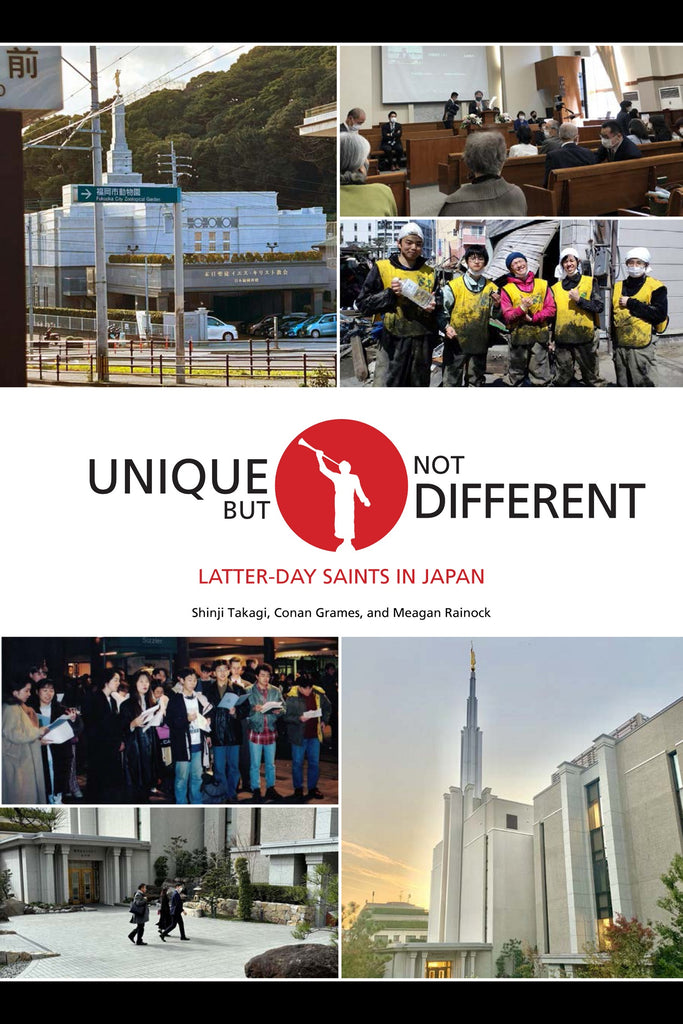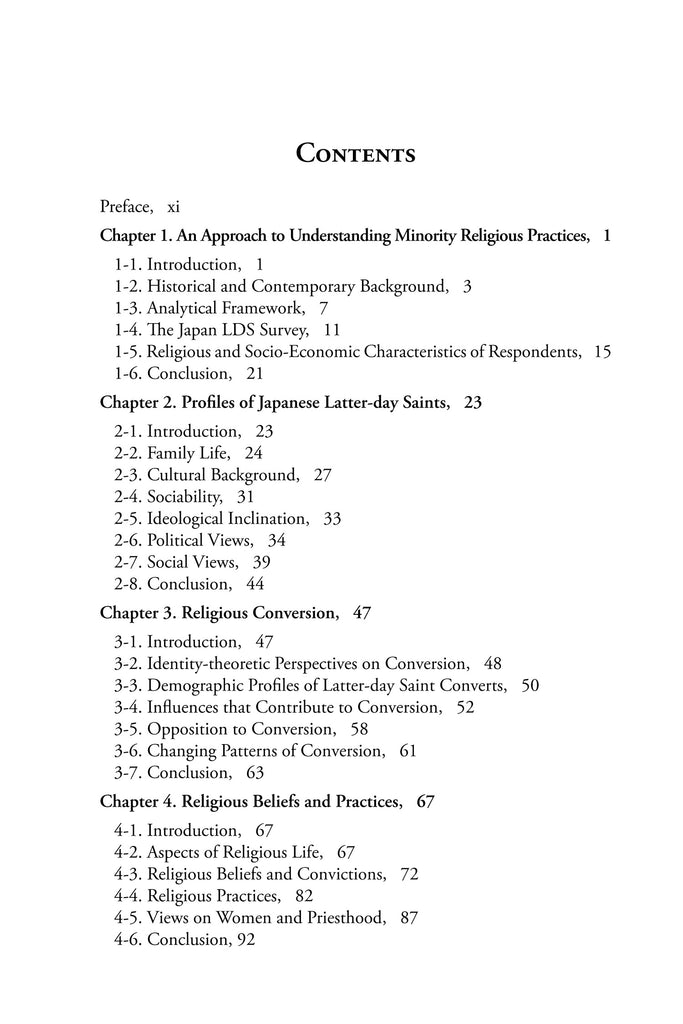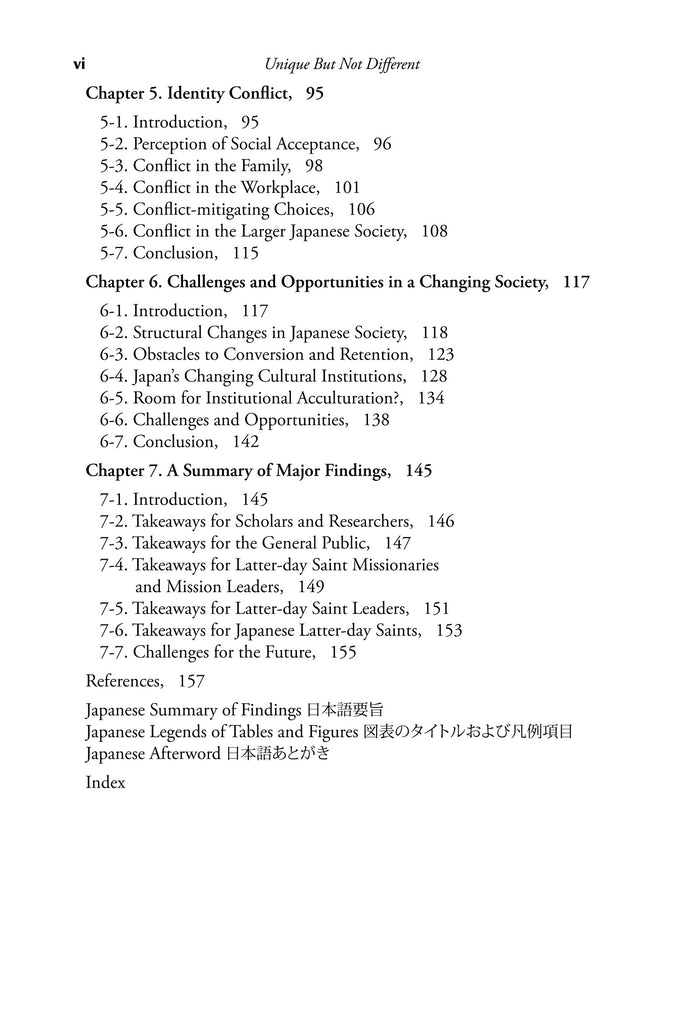Unique But Not Different: Latter-day Saints in Japan
$20.95
Now Available!
日本国内にお住いのお客様は、Amazon.co.jpからご注文ください。
- “Provides readers with remarkable insights into the Japanese membership of The Church of Jesus Christ of Latter-day Saints two decades into the twenty-first century.” —Reid L. Neilson
- “A crucial source for understanding Mormonism’s increasingly global reach.” —Benjamin E. Park
“A must read for all members of The Church of Jesus Christ of Latter-day Saints who love the Japanese people, have served a mission in Japan, spent time in Japan, or just want to understand the Japanese people and culture better.” —W. Steve Albrecht



Available in ebook for Kindle, Apple, Google Play, and, Kobo.
Also available through Amazon.
Download a free sample preview.
Book Description:
Unique But Not Different: Latter-day Saints in Japan offers an insightful exploration into the experiences of Japanese members of The Church of Jesus Christ of Latter-day Saints, shedding light on their integration of religious identity within a predominantly non-Christian society. Through comprehensive survey data collected from active practitioners, authors Shinji Takagi, Conan Grames, and Meagan Rainock delve into the challenges and opportunities these Latter-day Saints face. In doing so, they examine the diverse social, political, and ideological backgrounds of Japanese Latter-day Saints, providing valuable insights for scholars, missionaries, Church leaders, and members alike.
With meticulous analysis, the authors navigate topics ranging from personal conversion experiences to religious beliefs and adherence to cultural practices. They examine how Japanese Latter-day Saints successfully negotiate identity conflicts and contribute to the broader societal landscape amidst Japan's evolving cultural institutions. Offering statistical profiles and key findings tailored to various stakeholders, Unique But Not Different serves as an indispensable resource for understanding the complex dynamics of religious identity and acculturation in Japan, while also providing valuable insights applicable to minority religious practices worldwide.
For Japanese readers, the volume also includes a Japanese Afterword and translations of the summary, findings, tables, and figures.
Comprehensive Table of Contents:
.
Preface, xi
Chapter 1. An Approach to Understanding Minority Religious Practices, 1
1-1. Introduction, 1
1-2. Historical and Contemporary Background, 3
1-3. Analytical Framework, 7
1-4. The Japan LDS Survey, 11
1-5. Religious and Socio-Economic Characteristics of Respondents, 15
1-6. Conclusion, 21
Chapter 2. Profiles of Japanese Latter-day Saints, 23
2-1. Introduction, 23
2-2. Family Life, 24
2-3. Cultural Background, 27
2-4. Sociability, 31
2-5. Ideological Inclination, 33
2-6. Political Views, 34
2-7. Social Views, 39
2-8. Conclusion, 44
Chapter 3. Religious Conversion, 47
3-1. Introduction, 47
3-2. Identity-theoretic Perspectives on Conversion, 48
3-3. Demographic Profiles of Latter-day Saint Converts, 50
3-4. Influences that Contribute to Conversion, 52
3-5. Opposition to Conversion, 58
3-6. Changing Patterns of Conversion, 61
3-7. Conclusion, 63
Chapter 4. Religious Beliefs and Practices, 67
4-1. Introduction, 67
4-2. Aspects of Religious Life, 67
4-3. Religious Beliefs and Convictions, 72
4-4. Religious Practices, 82
4-5. Views on Women and Priesthood, 87
4-6. Conclusion, 92
Chapter 5. Identity Conflict, 95
5-1. Introduction, 95
5-2. Perception of Social Acceptance, 96
5-3. Conflict in the Family, 98
5-4. Conflict in the Workplace, 101
5-5. Conflict-Mitigating Choices, 106
5-6. Conflict in the Larger Japanese Society, 108
5-7. Conclusion, 115
Chapter 6. Challenges and Opportunities in a Changing Society, 117
6-1. Introduction, 117
6-2. Structural Changes in Japanese Society, 118
6-3. Obstacles to Conversion and Retention, 123
6-4. Japan’s Changing Cultural Institutions, 128
6-5. Room for Institutional Acculturation?, 134
6-6. Challenges and Opportunities, 138
6-7. Conclusion, 142
Chapter 7. A Summary of Major Findings, 145
7-1. Introduction, 145
7-2. Takeaways for Scholars and Researchers, 146
7-3. Takeaways for the General Public, 147
7-4. Takeaways for Latter-day Saint Missionaries
and Mission Leaders, 149
7-5. Takeaways for Latter-day Saint Leaders, 151
7-6. Takeaways for Japanese Latter-day Saints, 153
7-7. Challenges for the Future, 155
References, 157
Japanese Summary of Findings 日本語要旨, 163
Japanese Legends of Tables and Figures 図表のタイトルおよび凡例項目, 169
Japanese Afterword 日本語あとがき, 185
Index, 187
About the Authors, 191
Q&A with the Authors:
.
Q: What inspired you to undertake a comprehensive study on the practices of Japanese Latter-day Saints, particularly within the context of a minority religion in Japan?
A: This book grew out of the work we prepared for a volume of essays edited by Melissa
Inouye and Laurie Maffly-Kipp, who had asked us to write a chapter on how Japanese Latter-day Saints practice their religion. In order to conduct an objective, data-driven analysis, we decided to administer an anonymous survey to practicing Latter-day Saints. As we were preparing the survey, it became obvious that doing justice to the data would require not a chapter but a book. We also recognized that, realistically, we had only one chance to administer a survey, given its time- and labor-intensive nature. Hence our decision to make the survey much more comprehensive than was necessary to complete our assigned task, even though this carried a risk of deterring potential survey takers. This book is an outcome of that decision. Melissa’s and Laurie’s book has not yet been released. We hope it will be soon.
Q: Could you elaborate on the challenges and opportunities faced by Japanese Latter-day Saints within a society undergoing profound demographic and cultural changes?
A: Our thesis is that, while Latter-day Saints in Japan, as practitioners of a minority religion, face situations of identity conflict, societal changes, predominantly triggered by the adverse demographic trend, are increasing Japanese society’s tolerance for diversity. This obviously presents opportunities for The Church of Jesus Christ of Latter-day Saints if some accommodation is made for institutional acculturation (e.g., if a source of pervasive conflict, such as green tea drinking, is properly addressed).
Q: The survey data you collected offer insights into the experiences and perspectives of active Latter-day Saints in Japan. What were some of the most surprising or significant findings that emerged from your analysis?
A: We were most surprised to learn how representative the Latter-day Saint population is of the larger Japanese society—in terms of social and political views. Indeed, they may be unique in their beliefs but certainly not different from the rest of Japanese society.
Q: The book mentions that despite being a minority religion in Japan, Latter-day Saints have found a niche for their particular lifestyle by establishing long-term relationships and making conflict-avoiding career choices. Can you delve deeper into the specific strategies or practices employed by Japanese Latter-day Saints to integrate their religious identity into their daily lives, especially in contexts where it may diverge from mainstream cultural norms?
A: The most important aspect of individual acculturation is that Japanese Latter-day Saints choose professions that allow them to attend church on Sundays. Sabbath-day worship is a cultural practice uncharacteristic of Japanese customs. This prioritization of their lives is made easier because Latter-day Saints typically join the Church in their teens or twenties before they are established in their careers. Another major adjustment that Latter-day Saints in Japan must make is in the observance of the Word of Wisdom as they refrain from tea, coffee, sake, etc., which are so universally accepted cultural customs. The survey revealed that this has been less of a problem than one might expect, as LDS members feel generally accepted by peers at work and in the culture generally even as they decline to participate in these customs.
Q: What are the key takeaways from your book for various stakeholders, including scholars, missionaries, Latter-day Saint leaders, Japanese members, and the general public?
A: We have provided key takeaways for scholars, for members, and for other stakeholders in the final chapter of the book. We hope that these targeted summaries provide useful insights into the experiences of Japanese Latter-day Saints.
Praise for Unique But Not Different:
“Unique But Not Different by thoughtful observers Takagi, Grames, and Rainock, provides readers with remarkable insights into the Japanese membership of The Church of Jesus Christ of Latter-day Saints two decades into the twenty-first century. Mining statistical data from their own survey work, these scholars capture what it means to be a Latter-day Saint in Japan, including the opportunities and challenges associated with church membership in a minority faith in East Asia. They provide a valuable guide to those of us who research this global faith tradition and seek the latest religious data on a country whose past we study.” —Reid L. Neilson, Former Assistant Church Historian and Recorder, and author of Early Mormon Missionary Activities in Japan, 1901-1924
“Unique But Not Different provides distinctive insight and analytical tools into how conversion to The Church of Jesus Christ of Latter-day Saints is embraced in Japan. It masterfully describes how Latter-day Saints have adapted to Japanese culture representing a wide spectrum of Japanese society in terms of political and social views. It provides great insight on the impact of missionaries in the continuous growth of the Church through their Christ-like attributes of love, example, brightness, and character.” —Dale S. Cook, president of the Japan Tokyo North Mission (2020–23)
“Unique but not Different offers two important interventions into the field of Mormon history: it both expands the geographic scope and captures the experience of common Latter-day Saints. Written with a brisk pace and filled with fascinating information, this book will be a crucial source for understanding Mormonism’s increasingly global reach.” —Benjamin E. Park, author of American Zion: A New History of Mormonism
“This book helps the reader learn how the active members in Japan have found The Church of Jesus Christ of Latter-day Saints and how they have been able to enjoy the fruits of the gospel of Jesus Christ despite various challenges and obstacles in the country where just 1.5% of the population are Christians. The authors conducted an extensive survey among many members, which is an unprecedented endeavor. I highly recommend it.” —Takuji Nagano, president of the Japan Tokyo South Mission (2015–18)
“Unique But Not Different is a must read for all members of The Church of Jesus Christ of Latter-day Saints who love the Japanese people, have served a mission in Japan, spent time in Japan, or just want to understand the Japanese people and culture better. Based on responses and input from approximately 500 Church members in Japan, the authors have done a great job of letting the data speak for themselves. Through reading this book, you will understand better the demographics and profiles of Church members in Japan, trends in religious conversion, religious beliefs and practices of the Japanese people, and conflicts for the Japanese people while both trying to live the gospel and be successful in the Japanese culture, life, and workplaces. This book provides a thoughtful discussion of the challenges the Church and its members will face in the future. As one who has spent nearly six years in Japan as a missionary, I absolutely loved the book and, by reading it, gained a much better understanding of the reasons I had the experiences I did while serving there.” —W. Steve Albrecht, president of the Japan Tokyo Mission (2009–12)
“For an empirical insight into the influences affecting the growth of Church membership in Japan today, I highly recommend Unique But Not Different: Latter-day Saints in Japan. It is a scholarly insight for those of us who feel such love and respect for the Saints in that beloved land.” —Allen Hill, president of the Japan Tokyo Mission (2006–9)
About the Authors:
Shinji Takagi (MTS, Mediterranean and Near Eastern Studies, Vanderbilt Divinity School; PhD, economics, University of Rochester) is professor emeritus of economics at Osaka University, Osaka, Japan. A specialist in international economics, Professor Takagi has also held senior positions at the International Monetary Fund in Washington DC and visiting professorships at Brigham Young and Yale Universities, among other places. The author of nearly two hundred publications in economics, he has also published more than a dozen publications in Mormon history and biblical studies, including in the Journal of Mormon History, BYU Studies Quarterly, Biblical Theology Bulletin, Journal of the Bible and Its Reception, and Christianity & Literature, and currently serves on the Editorial Advisory Board of the Mormon Studies Review. His previous book on Japan, The Trek East: Mormonism Meets Japan, 1902–1968 (Greg Kofford, 2016), won the Mormon History Association’s biennial Best Book on International Mormonism award. He divides his time between two homes in Ashburn, Virginia and Fukuoka, Japan, where he holds an honorary position as Distinguished Research Professor at the Asian Growth Research Institute in Kitakyushu.
Conan P. Grames is an international lawyer who has lived and worked in Boston, New York, San Francisco, Princeton, NJ, Washington DC, and Tokyo. His twenty years’ experience living in Japan was divided almost equally between his legal career and time as a missionary for The Church of Jesus Christ of Latter-day Saints, serving as a young missionary in the Northern Far East Mission, then as president of the Japan Sendai Mission, public affairs director of the Asia North Area, and executive secretary to the Asia North Area Presidency. He is a graduate of the University of Utah and Harvard Law School. Conan is fluent in Japanese and has written and spoken extensively on the history of the Church in Japan. He and his wife, Cindy, are the parents of six married children and currently live in Draper, Utah.
Meagan Rainock holds a PhD in sociology from Vanderbilt University. As a researcher versed in both qualitative and quantitative methodologies, she focuses on the experiences of marginalized communities as they navigate social institutions. Past research projects span the topics of health and well-being, race and ethnicity, social control, and social psychology. She currently performs research and teaches college courses as a Vanderbilt-Fisk Postdoctoral Scholar in Nashville, Tennessee.
More Information:
206 pages
ISBN: 978-1-58958-791-5 (paperback)
Press Sheet











Share this item: